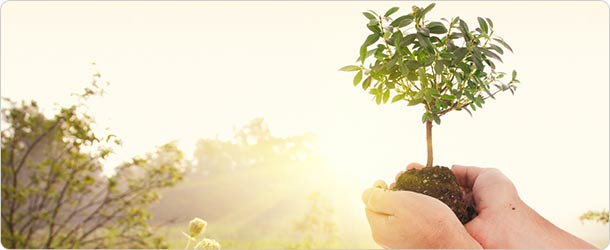
It's a word that everyone uses. But what does it mean? To me, for a long time it was the classic definition from the 1987 WECD conference - sustainable developments are those that "meet present needs without compromising the ability of future generations to meet their needs". www.un-documents.net/wced-ocf.htm
In the Sustainable Sites Intiative, their mission statement started with "First, do no harm."
But at this year's NYS Arborists meeting, I heard a different perspective from one of the speakers, Neil Hendrickson of Bartlett Tree Research, who made me start to "think differently".
He said - "do no harm" is not good enough at this point - so much "harm" has already been done that now we need to be active - we need to sequester carbon, clean the air and water and manage the soil.
Here are some of the points he made:
- 2012 was the hottest year on record in the US
- 2013 was the 4th warmest year in the world
- Temperature rise is associated with increases in both the minimum and maxiumum temperatures - both of these affect plants
- In 2012, 90% of the "record temps" were HIGH temperatures and the Plant Zone Heat Map shows more nights above 70 degrees F
- We are seeing warmer winters and warmer autumns - and fewer frigid nights
- Spring is arriving earlier
- There is a longer frost-free season
- There's been a 74% increase in heavy downpours
- Models say: expect more days above 95 degrees F in August
Climatologists predict that future climate shifts will include more frequent extreme heat and more frequent extreme cold, as well as more extreme hydrologic events like searing drought and flooding rains. High pressure systems are tending to intensify because dark water replaces white ice as the polar ice melts. Dark water absorbs more energy rather than reflecting it, and this energy evaporates more water into the atmosphere. Increased energy in the atmosphere leads to an unstable jet stream and unpredictable variability. Of course, the system is extremely complicated with tons of feedback loops and this is a gross over-simplification. But certain climate changes are irreversible on a time scale of 1000 years, even if no more CO2 is put into the atmosphere - we need to be aware of some of the changes and their consequences. And try to actively counteract them.
- When we disrupt ecosystems, we decrease species diversity. With less diversity there are fewer possibilities for adaptation - plants that can't adapt fast enough are likely to die off.
- Increases in the frequency of heat waves and drought increases stress on plants, which increases their susceptibility to pests and diseases.
- An increase in warm nights means that respiration goes up but photosythesis does not.
- Longer frost-free seasons mean that plants may not go through acclimitization to extreme cold events and may not be cold tolerant.
- Invasives can adapt more quickly (that's part of what makes them invasive) so they can out-compete natives.
Here are some of the effects of climate change on pests:
- allow northward expansion of warm-weather insects
- increase the number of generations per year in multi-generation insects
- favor pests over predators
- disrupt the timing between flowering and pollinators
- beneficial insects might "miss" their pest host, allowing a pest population to increase
- the polar vortex could kill the beneficial predator but not the invasive pest
- invasion of new habitats by pests - because insects can adapt faster than trees
- warmer winters and less snow can contribute to increased deer populations
His take home message : change is inevitable and unpredictable. His suggestions about what we should be doing above and beyond "do no harm" are a practical and practiceable definition of sustainability for 2014:
1. Take care of the soil.
2. Don't get hung up on native plants - that's looking backward and the environment is changing forward.
3. Look for plants that are better-adapted if your aren't doing well.
4. Increase diversity.
5. Capture rainwater
6. Preserve beneficial insects.
The next day, I attended a seminar at NYBG given by Jane Didona, a Landscape Architect, talking about LEED guidelines as they relate to Landscape Design. She had another perspective on the definition of sustainability, one that looks at the overall site, including the buildings - She showed three overlapping circles - Social Equitability, Economic Feasibility and Environmental Soundness - Sustainability is the intersection of all three of these qualities.
Ancient Native American Proverb:
Treat the Earth well. It was not given to you by your parents, it was loaned to you by your children. We do not inherit the Earth from our ancestors, we borrow it from our children.
